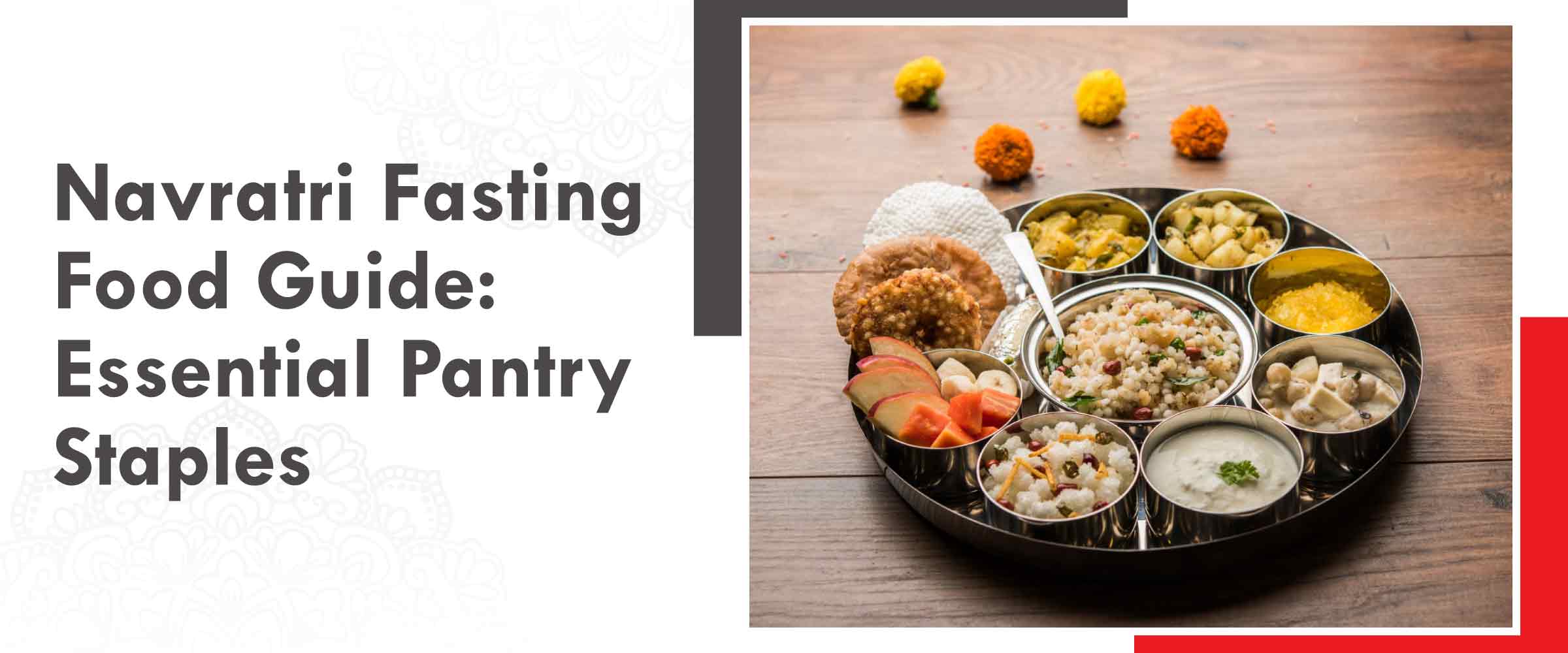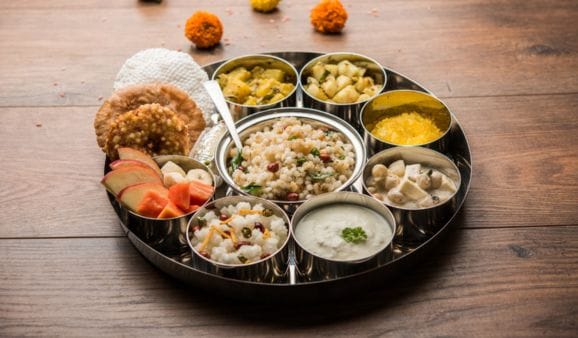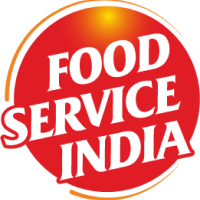
What to Serve, Stock and Sell: The Ultimate Navratri Fasting Food Guide
Navratri (translation: nine nights) is one of the most celebrated Indian religious festivals of the year. During this period many followers observe a 9-day fast that is committed to the worship of Maa Durga, detoxification, and a spiritual cleansing of the mind and body.
However, you will find that the significance of the festival extends beyond religious practices and Navratri fasting food. It is also a festival celebrated with profound culinary zeal and dance across the country.
From the wildly popular Garba dance events in Gujarat to the elaborate Durga Pujas in Bengal, every corner of the country resonates with celebratory fervour.
But how does this translate to the food industry?
Food businesses usually report a 25% to 50% increase in sales during the Navratri period. This makes Navratri an extremely important market opportunity for food businesses and HoReCa establishments.
How can your business master sales during this fasting season and tap into a festive goldmine?
Read on if you want to find out more.
A] Navratri Fasting Food and Rules: What to Eat and What Not to Eat
Let’s begin with the fast itself. The fasting is carried out during the nine days of Sharad Navratri to seek the blessings of Goddess Durga.
There are numerous variations of the fast. In some, fasting individuals consume only water. In some they consume only fruits and nuts, while in others, they consume only one whole meal a day.
Here are some of the general rules of what Navratri fast food you can eat and what you should avoid:
1. Grains and Flours
You are not allowed to consume regular grains like rice and wheat during the Navratri festival. Buckwheat flour (Kuttu ka atta), water chestnut flour (Singhare ka Atta), or amaranth flour (Rajgire ka atta) are instead the preferred options.
Samvat ke chawal (barnyard millets) or Samay ke chawal are used instead of rice in the preparation of dhoklas, kheer and khichdi along with other items in your Navratri snacks list. Sabudana is another staple food ingredient used during this time of the year.
2. Fruits
There are no restrictions on the kinds of fruits you can consume during the festival period. Many devotees fast with only fruits and milk during these nine days.
3. Spices and Herbs
You can consume sendha namak or rock salt, but not table salt during this period. For spices, you are allowed to use cumin, cardamom, black pepper, kokum, tamarind, nutmeg, cloves, cinnamon, ajwain, and dry pomegranate seeds. Some fasting individuals also use chaat masala, dry mango powder, coriander leaves, red chilli powder, etc.
4. Vegetables
During the fasting period, the vegetables you can consume include sweet potatoes, arbi, yams, potatoes, raw pumpkin, lemons, bottle gourd, cucumbers, carrots, and spinach, amongst others.
5. Dairy Products
Dairy or milk products like paneer, curd, malai, ghee, white butter, and khoya and milk preparations are usually consumed by fasting individuals.
6. Food Items to Avoid
Foods prepared with garlic or onions, along with all kinds of fast food or canned food, should be strictly avoided during the fasting period. Your Navaratri fasting food list should also not include legumes, whole wheat flour, corn flour, rice flour, maida, lentils, and rava.
B] Understanding the Spike in Demand During Navratri
According to recent estimates, restaurants often experience a 25% to 50% increase in sales during major festivals like Diwali and Navratri due to the increased demand spikes observed in these festive periods.
Here are some other statistics that attest to this increase in demand:
- During Navratri, restaurants often have to change 20% to 40% of their usual menu with Navratri food items or fasting items.
- The requirement for popular festive ingredients such as sabudana, makhana, and buckwheat flour rises by 2 to 3 times during Navratri.
- Speciality festive ingredients such as singhara flour or kuttu experience a rise in price by 15% to 35% during Navratri.
- Bulk order or catering businesses have experienced a massive increase in orders, up to 100% to 150%, during Navratri.
C] Strategic Sourcing Guide for Food Businesses
To maximise sales during the busy Navratri season, you need to adopt a tailored approach to inventory management and sourcing to improve kitchen productivity. For example, you can avail yourself of our seasonings, ready to cook gravies, sauces, and spices to cut down on prep time and maximise kitchen efficiency during this busy period.
Here are some other pre-festival planning tips you could use to get a head start on your preparations:
- 8 to 10 weeks before Navratri: Your process should begin by carrying out the required market research. Identify your top restaurant supplier of speciality items such as singhara flour and kuttu flour. It would be prudent to make your orders before the peak time hits. This will ensure you don’t have to pay bloated amounts during the busy festival season.
- 6 to 8 weeks before Navratri: Once you have decided on your preferred vendors, you should look to secure supply contracts with them. Bulk purchases of in-demand items during the festive period, such as makhana, rock salt, and sabudana, will cost you significantly more. By securing early supply agreements for items in your Navratri food list you could end up saving more in the long run.
- 4 to 6 weeks before Navratri: Bulk order non-perishable items in advance to avoid having to pay inflated rates during the festival period. Based on your current booking level and previous years’ requirements, finalise your inventory levels.
- 2 to 4 weeks before Navratri: At this time you can contact your fresh produce vendors and make your final orders. It is important that you set specific daily schedules for the delivery of perishable food items like seasonal vegetables and milk products.
Recommended SKU Stocking Strategy
1. For High-Volume Essentials
- Buckwheat flour: Stock 300% to 400% of normal grain flour volumes
- Sabudana: Chief ingredient for popular festival preparations such as sabudana vada and khichdi.
- Rock salt: Use instead of regular salt in all preparations
- Makhana: Are an important component of many satvik preparations
Speciality Ingredients:
- Water chestnut flour: Used as a primary option for flour
- Amaranth flour: A popular choice among health-conscious people
- Coconut products: Fresh coconut, coconut oil, and desiccated coconut to use across multiple preparations
Elevate your menu this Navratri – buy our curated fasting food supplies through our reliable horeca services now!
D] Our Tips for Restaurants and Caterers During Navratri
1. Simplified Recipe Development
Streamlined Ingredient Lists
Navratri vrat food items succeed in simplicity. They depend more on prep technique than a long list of ingredients. For example, in aloo-jeera all you need to add are potatoes, cumin, rock salt, and ghee. You can make it quickly and it is also extremely cost-effective.
Cross-Utilisation Strategies
You should use your ingredients across multiple preparations. For example, buckwheat flour can be used for poori, pancakes, and even curry bases. This reduces waste and speeds up kitchen workflows.
2. Preparation Techniques
Precision Tempering
Most fasting menus don’t include onion and garlic. This means your emphasis will be on getting the cumin-based tempering right. It’s essential to get the crackle and aroma right.
Salt Handling
Rock salt reacts differently than iodized salt. It dissolves slower and behaves inconsistently in large-batch cooking. It is important to train your staff to adjust cooking times and techniques accordingly.
3. Menu Design Best Practices
Thali Formats
Thalis are the most popular customer menu option during Navratri. They offer variety while keeping ingredient usage controlled. Add dishes like samak rice, sabudana tikki, and makhana kheer to your thali menu, as they are quick to plate and preferred by customers who are observing a fast.
Popular Dish Categories
- Starters: Include popular Navratri food items such as sabudana vada, kuttu pakora, and roasted makhana as part of your fasting menu.
- Main Dishes: Singhara roti, buckwheat pancakes, and potato curry are possible menu inclusions you can consider.
- Rice Substitutes: Samak rice and sabudana khichdi can be included in your menu instead of the usual rice items.
- Desserts: Include sweet potato halwa, makhana kheer, and seasonal fruits in your dessert menu.
Beverages
You can consider offering a specialised drinks menu for your customers. By providing a unique and refreshing beverage like Marimbula Yoghurt Frappe along with other options made with Marimbula cooler mix, you can capture new customers during this busy period.
4. Staff Training Requirements
Cross-Contamination Prevention
You need to maintain separate prep areas. Even minimal contact with restricted items like grains or garlic can break trust with your fasting customers.
Ingredient Substitution Knowledge
Kitchen teams need to be well-versed with the following swaps during fasting days:
→ Replacing regular salt with rock salt.
→ Replacing wheat flour with buckwheat flour.
→ Replace onion-garlic with cumin-ginger.
As these aren’t 1:1 swaps, you need to account for changes in texture, prep time, and flavour release.
Customer Communication
Your front-of-house staff should know what’s in each dish and how it’s made. Customers may ask if a tikki contains arrowroot or if the sweetener is jaggery, and your staff should be able to reply confidently. This helps in building credibility in the minds of your customers.
5. Operational Efficiency Tips
Batch Prep
You should soak sabudana overnight or prep sweet potatoes in bulk to avoid peak-hour delays. By assigning tailored prep cycles, you can ensure that the special meals don’t clash with regular service.
Quality Control
Your customers will expect quality consistency. Hard sabudana or oily puris can turn them away. Conduct test batches and tighten cooking SOPs for all your fasting SKUs.
Further Reading:
Conclusion:
The best food service businesses use this time to prove they understand both ritual and revenue. As you consistently execute fasting dishes with clarity and care, you garner stronger word-of-mouth publicity, which will help you bring in more customers during this busy festive period.
For a modern HoReCa company in India, this is cultural competence in action and not just tradition on a plate.





